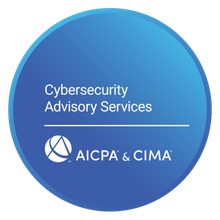Free WISP Template: Safeguard Your Business with IRS Compliance
Free WISP Template: three words that can make a significant difference in your journey towards achieving IRS compliance. In today's digital landscape, safeguarding sensitive data is of paramount importance for businesses. As an owner or manager, it is not only your responsibility to protect valuable information but also to meet regulatory requirements, including those set by the Internal Revenue Service (IRS). Failure to comply with these standards can lead to severe penalties and reputational damage.
To assist you in fortifying your business and navigating the complexities of IRS compliance, we are thrilled to offer you a powerful resource: a free Written Information Security Plan (WISP) template. This meticulously crafted template serves as a comprehensive blueprint, empowering you to establish robust data protection measures, mitigate the risk of unauthorized access and data breaches, and ensure compliance with IRS regulations.
With this free WISP template in your hands, you can proactively address data security requirements, streamline your compliance efforts, and fortify your business against potential threats. So, let's delve deeper and explore how this free WISP template can be the cornerstone of your IRS compliance strategy.
To get started right away, simply fill out the form at the top of the page and receive your free WISP template instantly. With this valuable resource in hand, you'll be equipped to navigate the complexities of IRS compliance with confidence. So, let's dive in and discover how this free WISP template can help safeguard your business and keep you on the right side of IRS compliance.
What is a WISP (Written Information Security Plan)?
To ensure a clear understanding of the role of a WISP in IRS compliance, let's delve into its core concept. A Written Information Security Plan (WISP) is a comprehensive document that outlines an organization's approach to securing sensitive information and safeguarding it from unauthorized access, use, or disclosure.
Essentially, a WISP serves as a roadmap for implementing effective security measures and adhering to relevant laws and regulations, including those imposed by the IRS. It encompasses policies, procedures, and protocols that govern the management, storage, and handling of sensitive data within your business.
By establishing a well-defined WISP, you demonstrate your commitment to protecting confidential information, reducing the risk of data breaches, and upholding the integrity of financial systems. The IRS recognizes the significance of WISPs as an essential means to safeguard taxpayer data and ensure the overall security of financial transactions.
Now that we have a solid grasp of what a Written Information Security Plan entails, let's explore its pivotal role in achieving IRS compliance and the valuable benefits it can bring to your business.
The Importance of Having a WISP for IRS Compliance
As mentioned earlier, a WISP (Written Information Security Plan) is not only crucial for IRS compliance but is also mandated by federal law. The GLBA (Gramm-Leach-Bliley Act) is one such federal law that requires businesses handling personal financial information to develop and implement comprehensive safeguards for data security and confidentiality.
By incorporating the requirements of the GLBA into your WISP, you ensure that your business meets the necessary standards for protecting sensitive financial information. Compliance with federal laws like the GLBA is not only a legal obligation but also vital for building trust with your customers, assuring them that their personal and financial data is secure.
Having a WISP in place that aligns with the requirements of federal law demonstrates your commitment to data security, reduces the risk of breaches, and helps you avoid penalties and reputational damage. The IRS recognizes the significance of WISPs in maintaining the integrity of financial systems and protecting taxpayer data.
By proactively implementing a WISP tailored to IRS compliance, you not only fulfill legal obligations but also enhance your business's overall security posture. Now, let's delve into the benefits of utilizing a WISP template specifically designed to streamline your IRS compliance efforts.
In the next section, we will explore the advantages of leveraging a WISP template to effectively safeguard your business, maintain IRS compliance, and protect sensitive information from potential threats.
Benefits of Using a WISP Template for IRS Compliance
Utilizing a pre-designed WISP template tailored to IRS compliance offers several advantages that can streamline your efforts and enhance your overall data protection measures. Let's explore the key benefits of using a WISP template:
-
Time and Cost Savings: Developing a WISP from scratch can be a time-consuming and resource-intensive process. However, with a WISP template, you gain a head start by having a structured framework and essential components already in place. This saves you valuable time and reduces the costs associated with creating a WISP from the ground up.
-
Compliance Assurance: A WISP template designed specifically for IRS compliance ensures that you address the necessary requirements set forth by the IRS. It covers key elements, such as risk assessments, access controls, incident response procedures, and employee training. By leveraging a comprehensive template, you can have confidence in meeting IRS compliance standards effectively.
-
Customizability: While a WISP template provides a solid foundation, it also allows room for customization to align with your business's unique needs and circumstances. You can tailor the template to incorporate industry-specific requirements, organizational policies, and specific data protection measures relevant to your operations. This flexibility ensures that your WISP remains practical and applicable to your business.
-
Enhanced Security: Implementing a WISP template reinforces your commitment to data security and establishes a proactive approach to protecting sensitive information. By following the guidelines outlined in the template, you can enhance your security posture, mitigate risks, and reduce the likelihood of data breaches or unauthorized access to valuable data.
-
Streamlined Communication: A WISP template serves as a comprehensive document that promotes clear communication within your organization. It outlines roles, responsibilities, and protocols related to data security, facilitating a consistent and coordinated approach among employees. This clarity ensures everyone is on the same page regarding their obligations, fostering a culture of security awareness and compliance.
By leveraging a pre-designed WISP template for IRS compliance, you can effectively address data security requirements, streamline your compliance efforts, and fortify your business against potential threats. In the next section, we will delve into the best practices for implementing a WISP template and maximizing its benefits for your IRS compliance journey.
Stay tuned to learn the best practices for implementing a WISP template, ensuring seamless integration into your business operations, and fortifying your IRS compliance efforts without incurring additional costs.
Implementing the WISP Template for Seamless IRS Compliance
Now that you understand the benefits of using a WISP template for IRS compliance, it's time to explore the best practices for implementing the template effectively. Follow these steps to ensure seamless integration of the WISP template into your business operations:
-
Review the Template: Begin by carefully reviewing the WISP template you've obtained. Familiarize yourself with its structure, sections, and key components. Understand how the template addresses IRS compliance requirements and aligns with your business needs.
-
Customize for Your Business: While the WISP template provides a solid foundation, it's crucial to tailor it to your specific business operations. Customize the template by incorporating industry-specific regulations, organizational policies, and any additional security measures that are relevant to your operations.
-
Conduct a Risk Assessment: Perform a comprehensive risk assessment to identify potential vulnerabilities and threats to your sensitive data. Assess the likelihood and potential impact of various risks and prioritize them accordingly. Use the findings to inform the risk mitigation strategies you outline in the WISP template.
-
Define Policies and Procedures: Clearly define policies and procedures within the WISP template that govern the handling, storage, and protection of sensitive information. Cover areas such as access controls, encryption methods, incident response protocols, and employee training requirements. Ensure that the policies are realistic, practical, and enforceable within your organization.
-
Communicate and Train: Effectively communicate the WISP policies and procedures to all relevant employees within your organization. Conduct comprehensive training sessions to ensure that employees understand their roles and responsibilities in maintaining data security and complying with IRS regulations.
-
Regularly Update and Maintain: Data security is an ongoing process. Regularly review, update, and maintain your WISP to adapt to changing threats and regulations. Conduct periodic audits and assessments to verify the effectiveness of your WISP implementation and make necessary adjustments as needed.
By following these best practices, you can implement the WISP template effectively, align it with your business requirements, and establish a robust framework for IRS compliance and data security.
In the next section, we will explore the crucial connection between IRS compliance and data security, emphasizing the importance of strengthening data protection measures through WISP implementation.
The Crucial Connection Between IRS Compliance and Data Security
Achieving IRS compliance goes hand in hand with ensuring robust data security within your organization. The protection of sensitive information is not only a legal requirement but also vital for maintaining the trust of your customers and safeguarding your business reputation. Let's explore the crucial connection between IRS compliance and data security, highlighting the importance of strengthening data protection measures through WISP implementation.
-
Safeguarding Taxpayer Data: The IRS requires businesses to take appropriate measures to protect taxpayer data from unauthorized access, breaches, and misuse. By implementing a WISP, you establish a framework that outlines policies, procedures, and controls to safeguard this valuable information. A comprehensive WISP helps you meet IRS expectations, reducing the risk of data breaches and ensuring the confidentiality and integrity of taxpayer data.
-
Preventing Penalties and Legal Consequences: Non-compliance with IRS regulations can result in severe penalties, fines, and legal consequences. By implementing a WISP and adhering to its guidelines, you demonstrate your commitment to meeting IRS compliance requirements. This proactive approach not only helps you avoid penalties but also positions your business as a responsible custodian of sensitive data.
-
Mitigating Data Breach Risks: Data breaches can have significant financial, legal, and reputational implications for businesses. A WISP template provides a structured framework for identifying and addressing potential vulnerabilities and risks. By implementing the necessary security controls, such as access controls, encryption, and incident response procedures, you can minimize the likelihood and impact of data breaches.
-
Building Customer Trust: Protecting customer data is essential for building trust and maintaining strong relationships with your clientele. When customers see that you prioritize data security and comply with IRS regulations, they gain confidence in your ability to safeguard their sensitive information. This trust can lead to increased customer loyalty, positive word-of-mouth, and a competitive edge in the marketplace.
-
Strengthening Overall Data Security Posture: Implementing a WISP not only addresses IRS compliance requirements but also strengthens your overall data security posture. By adopting a proactive and systematic approach to data protection, you create a culture of security awareness within your organization. This culture permeates through all aspects of your business, enhancing security measures and reducing the risk of security incidents.
By recognizing the crucial connection between IRS compliance and data security, you can prioritize the implementation of a WISP to fortify your business against potential risks. In the next section, we will discuss practical steps to ensure ongoing WISP maintenance and continuous improvement.
In the upcoming section, we will explore practical steps to maintain and enhance your WISP, reinforcing data security measures and ensuring sustained IRS compliance.
Best Practices for WISP Maintenance and Continuous Improvement
Implementing a WISP is not a one-time effort but an ongoing commitment to maintaining data security and IRS compliance. To ensure the effectiveness of your WISP over time, it is crucial to follow best practices for its maintenance and continuous improvement. By staying proactive and responsive to evolving threats and regulatory changes, you can strengthen your data protection measures and enhance your IRS compliance efforts. Here are some key best practices to consider:
-
Regular Review and Updates: Schedule regular reviews of your WISP to ensure its alignment with current IRS requirements, industry best practices, and any changes in your business operations. Stay informed about new security threats, emerging technologies, and regulatory updates that may impact your compliance obligations. Update your WISP accordingly to address any identified gaps or areas for improvement.
-
Conduct Risk Assessments: Perform periodic risk assessments to identify potential vulnerabilities and assess the effectiveness of your existing controls. Evaluate new risks, analyze the impact of existing risks, and prioritize mitigation efforts based on the likelihood and potential consequences. Incorporate the findings of risk assessments into your WISP to strengthen your security measures.
-
Employee Training and Awareness: Provide regular training sessions and awareness programs to educate your employees about their responsibilities in maintaining data security and complying with the WISP. Foster a culture of security awareness, emphasizing the importance of following security protocols, handling sensitive data appropriately, and reporting potential security incidents promptly.
-
Incident Response Planning: Develop a comprehensive incident response plan that outlines the steps to be taken in the event of a security incident or data breach. Define roles and responsibilities, establish communication channels, and rehearse the response procedures through mock drills or tabletop exercises. Periodically review and update the incident response plan to reflect lessons learned and emerging threat landscapes.
-
Vendor Management: If your business relies on third-party vendors or service providers, ensure that they adhere to appropriate data security practices. Review their security policies and procedures, assess their compliance with relevant regulations, and include contractual clauses that enforce data protection measures. Regularly evaluate the security posture of your vendors to mitigate potential risks.
-
Document and Track Changes: Maintain proper documentation of all changes made to your WISP, including updates, revisions, and incident response activities. This documentation serves as evidence of your commitment to compliance and can be valuable during audits or regulatory inspections.
By following these best practices, you can ensure the ongoing effectiveness of your WISP, strengthen your data security measures, and maintain IRS compliance. Remember, compliance is a continuous journey, and staying vigilant is key to protecting sensitive data and upholding the trust of your stakeholders.
Final Insights: Strengthening Data Security and Achieving IRS Compliance
As we conclude this discussion on utilizing a WISP template for IRS compliance, let's recap the key insights and emphasize the importance of strengthening data security measures within your organization.
-
Compliance is Crucial: Adhering to IRS compliance requirements is not only a legal obligation but also vital for maintaining the trust of your customers and protecting sensitive information. Implementing a WISP template provides a structured framework to meet IRS expectations and mitigate potential risks.
-
WISP Templates Streamline Compliance: Utilizing a pre-designed WISP template saves time, effort, and resources by providing a starting point for developing a comprehensive information security plan. It offers customizable sections, ensuring that your WISP aligns with your business needs and industry-specific regulations.
-
Data Security is an Ongoing Effort: Data security is not a one-time task but an ongoing commitment. Regularly review, update, and maintain your WISP to adapt to changing threats, technological advancements, and regulatory requirements. Conduct risk assessments, provide employee training, and refine incident response procedures to fortify your data protection measures.
-
Strengthening Trust and Reputation: Prioritizing data security and achieving IRS compliance enhances customer trust, strengthens your reputation, and sets you apart from competitors. By demonstrating your commitment to safeguarding sensitive information, you instill confidence in your stakeholders and establish a competitive advantage.
Incorporating a WISP template into your organization's compliance framework is a strategic investment that yields significant benefits. It allows you to address IRS requirements, fortify data security, and maintain a proactive approach to risk management.
Remember, IRS compliance is not an isolated goal but part of a broader data security strategy. By integrating WISP implementation into your business practices, you create a culture of security awareness, fostering a resilient and compliant environment.
As you embark on your journey towards strengthening data security and achieving IRS compliance, leverage the resources and tools available to you, such as the free WISP template provided on our website. However, if you find yourself short on time or expertise, consider investing in a professionally designed WISP tailored to your specific needs. Our team offers customizable WISP solutions that can save you time and ensure you have a comprehensive plan in place to meet IRS compliance requirements.
Start your compliance journey today and fortify your business against potential threats, secure in the knowledge that you have taken the necessary steps to protect your valuable assets. Should you need any help, feel free to book a discovery call.






